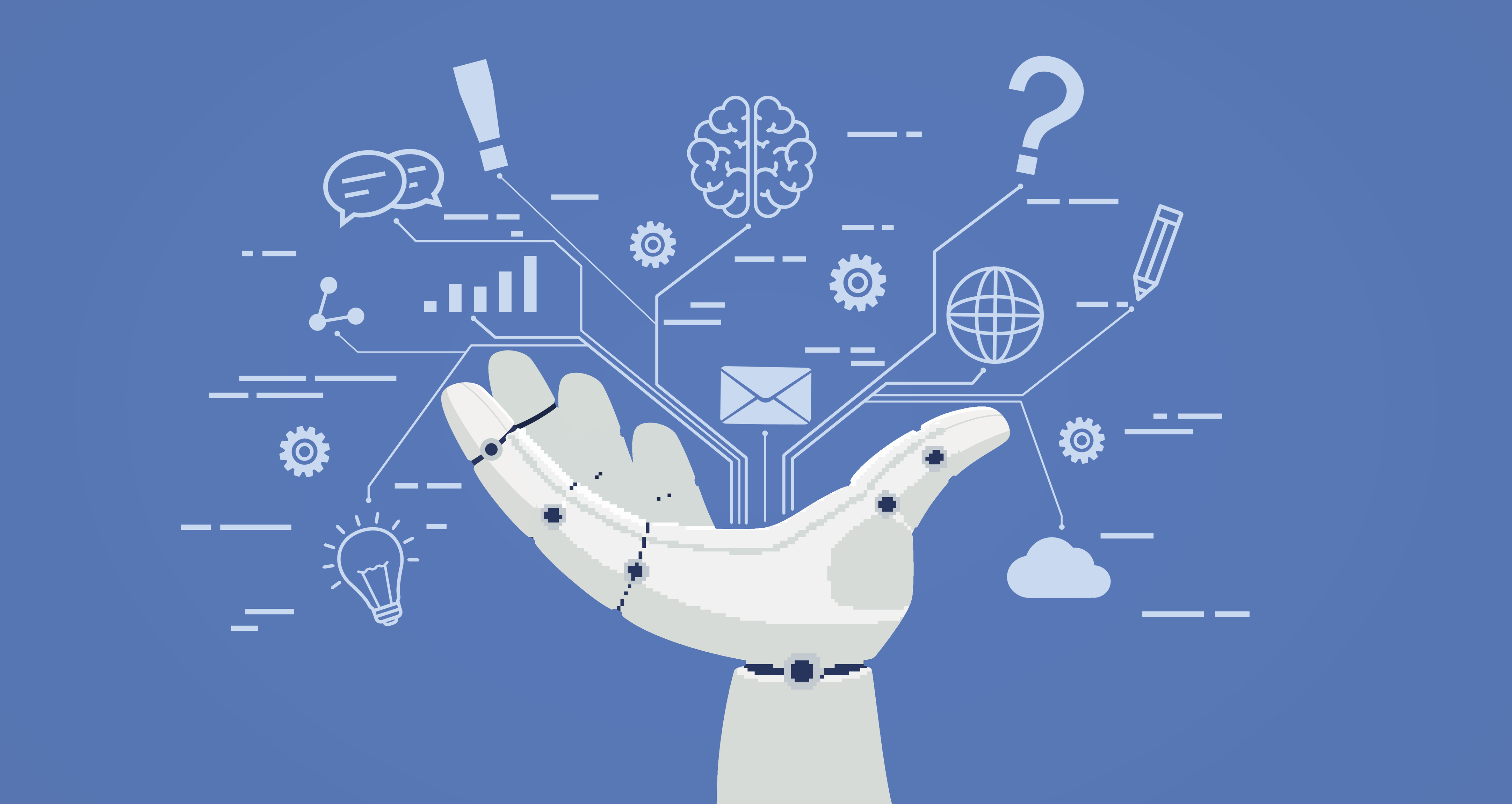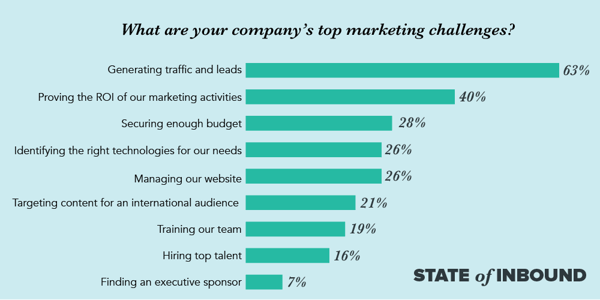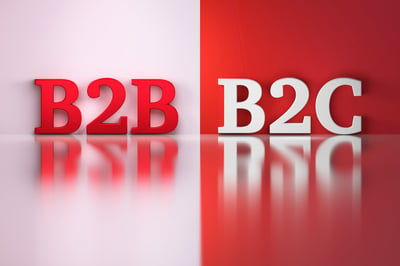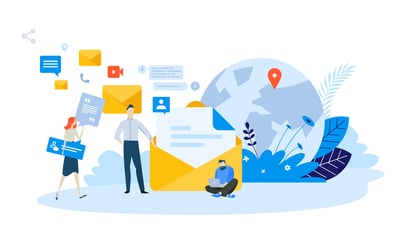August 9, 2019
 by Nanditha Vijayaraghavan / August 9, 2019
by Nanditha Vijayaraghavan / August 9, 2019

Solutions often meet us at intersections.
Futurists, Don Peppers and Martha Rogers knew this way back in 1993 when they released their book, The One to One Future: Building Relationships One Customer at a Time. Way ahead of its time, the book was written even before the existence of the world wide web, but its research and findings challenged marketers back then to radically rethink their basics and urged them to wake up to a future at the intersection of marketing and technology.
The concept is finally having its moment in 2019. Ubiquitous digital transformation, heightened consumer expectations, and changing buyer dynamics are collectively steering us towards a new era of B2B marketing: a one-to-one future in which how much we know about all of our customers will be far less significant than how much we know about each of our customers.
With driving growth continuing to be the single most focus for every marketer in the B2B landscape, it is but imperative for them to identify ways to leverage data and technology and experiment with new marketing strategies for winning customer loyalty.

Source: Hubspot
For nearly a decade now, it’s been all about change, about disruption, about speed, about the pace of change driven by disruption. The pace is daunting, but filled with incredible opportunities on a good day and a bit bewildering on a bad one.
If the last decade of B2B and B2C marketing was about things happening to us as marketers, then the next phase will be all about consumers, putting them right back at the centre and heart of that revolution. And because of the primacy of consumers in this technological era, we can comfortably agree that while technology remains the answer, it’s time to ask new questions.
Enter artificial intelligence.
AI has disrupted nearly every aspect of business and marketing is no stranger to it. What’s new though is the discovery of how it can truly impact and transform marketing in the future. Many forward-thinking businesses and their marketing leaders have run experiments with AI and are already witnessing groundbreaking results.
AI-powered marketing campaigns achieve three times the revenue relative to their use in the marketing mix and a 3.1X-7.2X lift in customer engagement, while continuously improving campaign performance across channels.
By 2021, 30% of B2B enterprises worldwide will exploit AI to suggest innovative customer experience actions that deliver value from a segment, persona, or individual customer perspective. To realize this trend and gear up for the one-to-one future, businesses will have to undergo necessary transformations in marketing.
These can often be long-drawn, risky, time-consuming processes demanding dedicated organizational effort. AI can help speed up the process and ensure the expected outcomes are realized, but there’s an important first step before this can happen.
Businesses and their marketers looking to leverage artificial intelligence and machine learning must first understand the key questions they are looking to address.
Is it to understand:
AI can help marketers find answers to the above questions and many more. Here are three powerful ways B2B marketers can leverage the intelligence of AI to be future-ready in the one-to-one world.
| Related: Artificial intelligence is trending. Learn what other B2B marketing trends are having the biggest impact on the way marketers do business. |
With the future becoming increasingly connected, the customer view is at a big risk of becoming even more fragmented than before.
Customers are growing highly demanding of the experiences they receive from their brands of choice. They seldom settle for flawed, less-than perfect experiences anymore and are now quick to switch after one single unfulfilling experience.
Creating a single unified view of customers has never been more important, and is now absolutely imperative for brands to earn their loyalty and repeat business. This is easier said than done, particularly with customer data scattered across multiple, siloed internal and external data sources. To complicate matters further, customers are using multiple devices and consuming numerous services across various lines of business, making it all the more difficult to get that complete view.
With data driving the current and most definitely, the next era of purposeful marketing, new opportunities lie in the massive amounts of consumer interaction data generated every single day. AI not only holds power to consolidate and analyze large quantities of this data, but also the potential to take customer-centricity and 360 degree views to the next level.
The one-to-one future calls for marketers to leverage AI in order to understand and effectively engage with every individual customer by unifying all their information from various data sources in one place, creating unique customer profiles, and identifying the most valuable segments across every channel.
AI can help to...
| Create well-defined customer segments by combining profile attributes (such as industry, title, or company) with observed behaviors (such as attendance at a specific webinar or event) |
| Identify a customer’s current experience as well as future intent, and trigger alerts when there is a change in the customer’s profile |
| Assimilate all the information about an individual visitor/user: everything from firmographic to intent data, and use that to predict the next page they will go to. |
See how artificial intelligence in marketing is impacting the world in our statistics roundup.
Marketers and consumers want the same thing today and tomorrow: a simple, intuitive, and valuable experience every time, everywhere.
This may be easy to achieve today, but in the one-to-one future where every customer will demand seamlessness in every journey and across every channel, this could be harder than it appears.
Intelligent buyer journey orchestration, as a result of AI-powered decision-making, can prove to be one of the most transforming strategies for B2B marketers in the years to come. AI can fuel a smarter way of engineering and optimizing every individual cross-channel customer journey thus helping marketers make faster, data-backed decisions at the right place and right time.
In fact, 70% of B2B marketers believe that AI-powered applications will ultimately be used to “improve and accelerate the buyer’s journey by recommending next best actions.” Furthermore, an MIT Technology Review Insights survey of 600 executives reveals that 9 out of 10 companies have put this in motion and are using AI to improve their customer journeys.
And they’re not wrong.
AI can help to...
| Map the various events affecting different stages of the user journey from purchase consideration to advocacy |
| Evaluate trends and behavior patterns for every customer at every stage of their journey. |
| Identify which paths are and aren’t performing well and optimize those which aren’t |
| Measure the average revenue and track the number of unique users who take a specific journey |
| Deliver next-best offers and make recommendations in real-time to specific users/segments at certain stages of their journey |
| Execute an important campaign based on customer specific channel preferences |
Content may have been king in the past, but today contextual content rules the roost.
With the content deluge facing consumers in this hyper-competitive age of information, AI holds the potential to measurably elevate a brand’s content strategy and deliver relevant meaningful messages to their target audiences.
Plus, with 47% of marketers struggling to produce content at scale currently, the logical next step for marketers is to leverage the intelligence of AI and reuse existing content assets effectively, untap the hidden potential of context and produce new, personalized content at scale.
AI can help to...
| Analyze all existing online content for gaps and identify new opportunities |
| Choose keywords and topic clusters for content optimization across all channels |
| Discover insights into the top-performing content-driven campaigns |
| Understand the type and amount of resources required to create various types of content |
| Map customer segments that respond better to a content A vs. a content B |
| Suggest better resonating content for specific customer segments and at specific points in the customer’s journey |
| Analyze the content tone of say email subject lines and recommend the one with the highest possibility of success |
| Measure the ROI of new content pieces, and recommend new content ideas based on past content’s ROI |
The people have spoken. The one-to-one future of B2B marketing will compel marketers to think out-of-the-box and create simpler, frictionless experiences for each and every individual customer, allowing them to easily self-educate and effortlessly navigate through their respective journeys.
With real-time customer engagement becoming a top priority as well as the biggest challenge for B2B marketers, they will have to look to technology advances in AI and data-driven strategies to stay relevant and competitive.
AI is not a solve-all solution to the challenges facing B2B marketers today or in the near future. It is, however, a great way to maximize existing opportunities and uncover newer, more impactful methods to boost revenue, drive long-term growth and create customer advocates.
Ready to implement artificial intelligence software into your B2B marketing strategy? Get started today!
Nanditha is a Growth Marketer at Dixa who is passionate about how storytelling and targeted messaging create business-changing content. She helps purpose-driven businesses increase brand awareness, generate leads, and acquire new customers. She is equally passionate about building communities that nurture and incubate world-changing ideas.
You can distinguish between B2B vs. B2C marketing, but in the end, you must market for H2H:...
 by Axel Kuehnle
by Axel Kuehnle
Email is one of the go-to forms of communication for many companies who want to connect with...
 by Michael Bibla
by Michael Bibla
You have come across hundreds of long lists of growth strategies.
 by Patrick Whatman
by Patrick Whatman
You can distinguish between B2B vs. B2C marketing, but in the end, you must market for H2H:...
 by Axel Kuehnle
by Axel Kuehnle
Email is one of the go-to forms of communication for many companies who want to connect with...
 by Michael Bibla
by Michael Bibla


